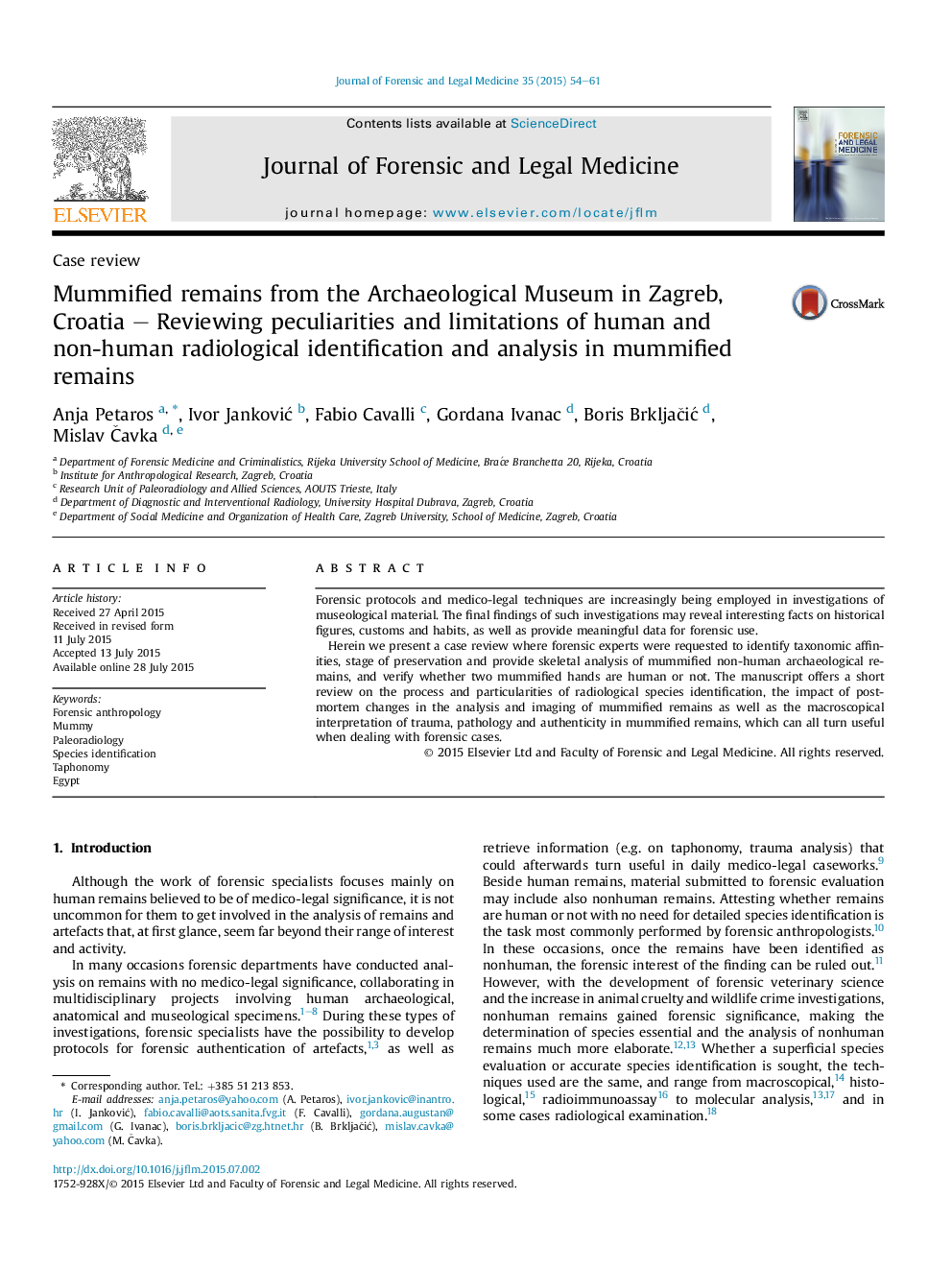| کد مقاله | کد نشریه | سال انتشار | مقاله انگلیسی | نسخه تمام متن |
|---|---|---|---|---|
| 101778 | 161292 | 2015 | 8 صفحه PDF | دانلود رایگان |
• Forensic experts may be involved in the analysis of ancient mummies.
• Mummies represent a specific material for species identification.
• Imaging helps to identify species, trauma, pathology and authenticity of mummies.
• Imaging techniques may show limitations in the investigation mummified animals.
• Postmortem changes may interfere with the interpretation of species and trauma in mummies.
Forensic protocols and medico-legal techniques are increasingly being employed in investigations of museological material. The final findings of such investigations may reveal interesting facts on historical figures, customs and habits, as well as provide meaningful data for forensic use.Herein we present a case review where forensic experts were requested to identify taxonomic affinities, stage of preservation and provide skeletal analysis of mummified non-human archaeological remains, and verify whether two mummified hands are human or not. The manuscript offers a short review on the process and particularities of radiological species identification, the impact of post-mortem changes in the analysis and imaging of mummified remains as well as the macroscopical interpretation of trauma, pathology and authenticity in mummified remains, which can all turn useful when dealing with forensic cases.
Journal: Journal of Forensic and Legal Medicine - Volume 35, October 2015, Pages 54–61
